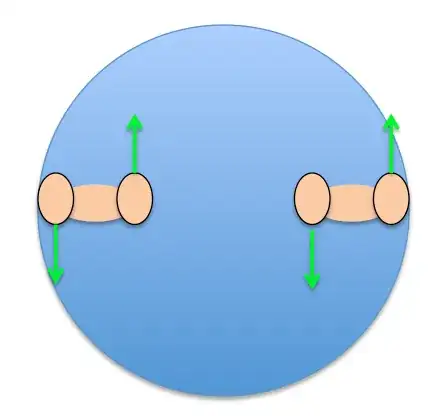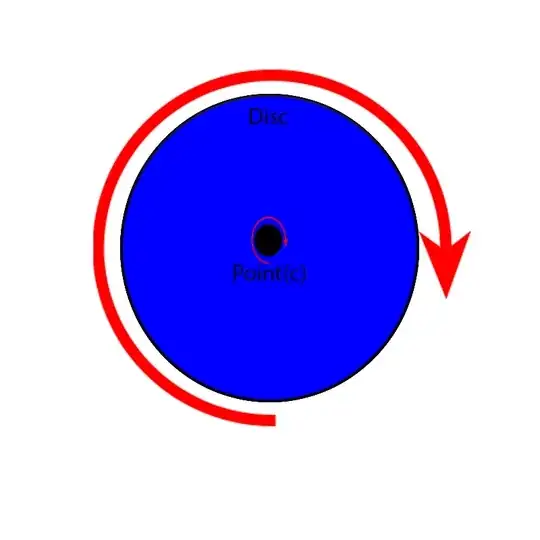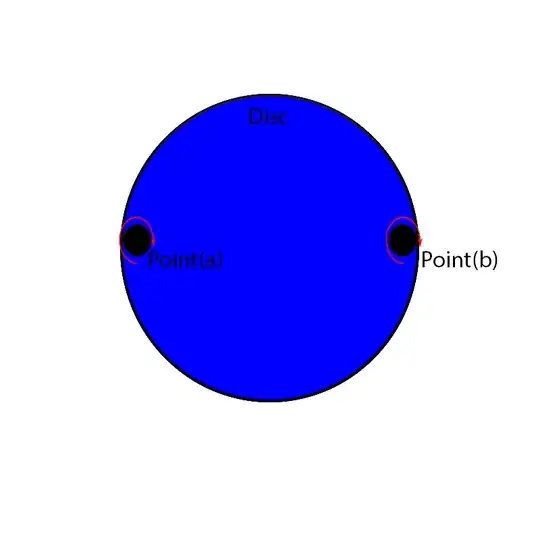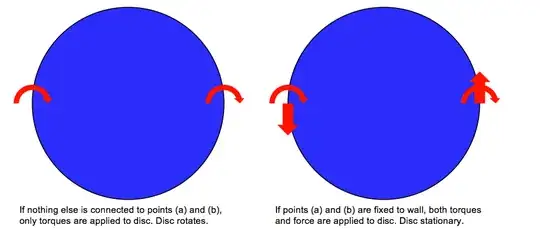If you attached two flywheels through a motor to the disk at the positions you show, and the motors start spinning in the same direction, then conservation of angular momentum tells us that as the flywheels spin clockwise, the disk must (and will) rotate counterclockwise.
However - if you attach the motors to an external structure, you are preventing rotation. I think that's what you inadvertently did in your original experiment and why you were getting confused (per your comment under ja72's answer).
UPDATE
The laws of motion that apply in this instance can be summarized as follows:
- the center of mass will move as though the vector sum of all forces acts there
- the angular momentum of the object will change with the sum of all torques multiplied by their duration: $$\Delta L = \sum \Gamma \Delta t$$ regardless of the axis about which the torque acts.
This second point is the one you appear to be struggling with. But you can think of it as follows: if you have a floating disk, and you have people standing on that disk with everything stationary, there is no net angular momentum. Now regardless of what the people do, the SYSTEM (people plus disk) must still have net zero angular momentum. So if two people start to spin clockwise about their own axis, the disk must start to spin counterclockwise. Let's see how that works in practice - put them with their feet apart on the disk:

Both are trying to rotate, and so they push forward with their right foot and back with their left. But if you look closely you see that there are now two sets of torque: the left foot of the right hand person and the right foot of the left hand person make a pair that is centered about the center of the disk, and the other feet make another pair in the opposite direction. Now the force is the same but the distance is different, so there will be a net torque on the disk equal to the sum of the two torques applied by the two persons.
Take a bit of time and look at this picture; I think it should clear up your confusion.




